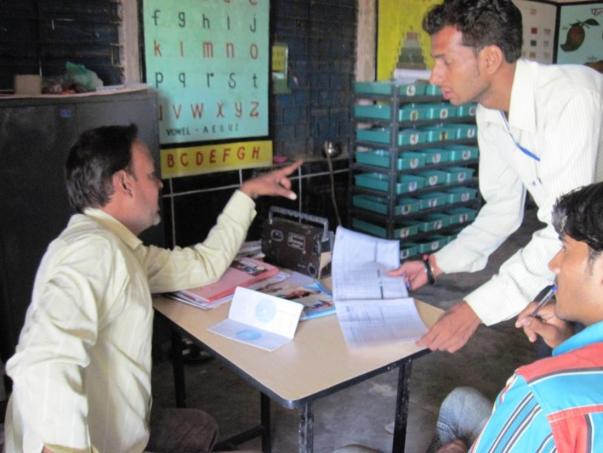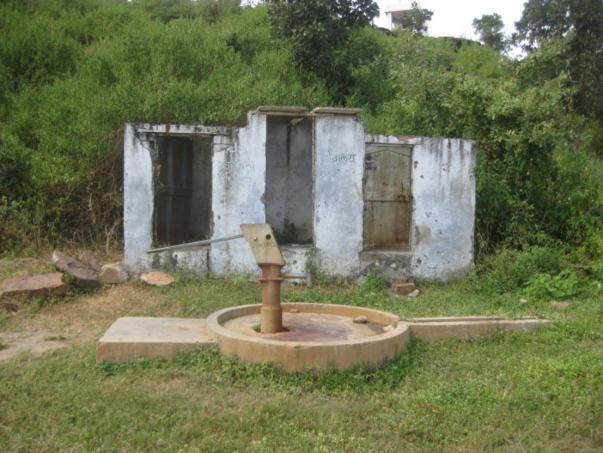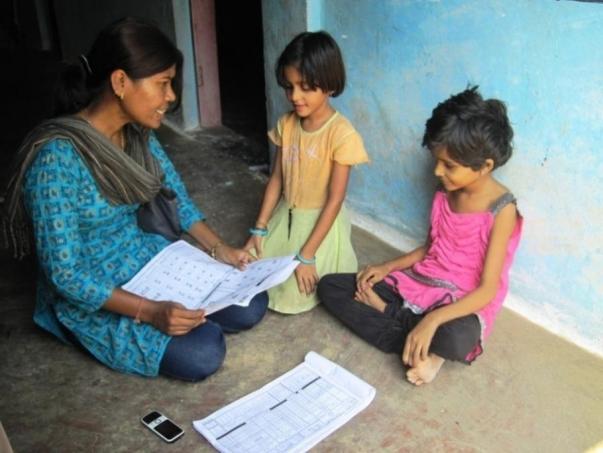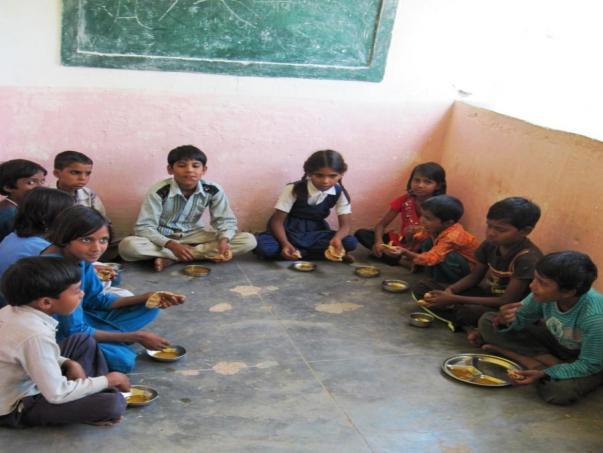
Window on the Sarva Shiksha Abhiyan, ASER and PAISA: Notes from Bhopal and Beyond
31 October 2011
Two weeks into a new job, there is nothing quite as refreshing as a field visit to gain a deeper sense of the nature of work one has embarked upon. So it was that, along with another colleague, I set off for Madhya Pradesh (MP) last week to meet state officials of the Sarva Shiksha Abhiyan (SSA) and observe the survey implementation for the Annual Status of Education Report (ASER). As regular readers of this blog may already know, while the PAISA District Survey tracks SSA fund flows and expenditure in great detail in ten districts across the country, the PAISA national survey (done in partnership with ASER) provides grant information at the state and national levels. [1]
On the agenda for the first day was a visit to the Rajya Shiksha Kendra (RSK − the state SSA office) to get an overview of the SSA, where we met with two state officials looking after finance and girls’ education. Both officials we met were particularly proud of the MP SSA portal, where information from the blocks and districts, including on school demands, budget and expenditure, and school report cards is regularly updated. When asked about delays in funds reaching the schools, the Financial Manager we met attributed it to the recruitment of new cluster coordinators during the current school year and to delays in the annual verification of bank accounts of individual schools – which are generally with different banks. Taking into account the long, drawn-out nature of the verification process, the state government is currently in the midst of overhauling the financial system and bank accounts are now being transferred to the same nationalised bank. The official expected delays to drop the following year (2012-13) and grants to be disbursed within the first two months of the new school year (that is, by August 2012). While it was great to see that the government was taking steps to minimise delays, upon our return to Delhi, we found that our colleagues had been given the same explanation of system overhaul not once, but twice: once in September 2010 previously in 2009!
The above visit with officials was complemented next by the school and village visits during the ASER survey. What struck me most during these visits was the lack of awareness and ownership on the part of most of the key stakeholders – the teachers, headmaster, and parents.

Surveyor taking attendance in a classroom shared by students of multiple classes, MP

Surveyors interviewing a Headmaster during the school visit. The bright, colourful trays and charts that can be seen the background have been received to implement the new Activity-Based Learning (ABL) system under the SSA.
In one school, for instance, we met two teachers who had just joined: while one had previously been a cluster coordinator, the other had been teaching elsewhere since 2006. Yet, surprisingly, neither one was aware of their entitlements as teachers under the Right to Education (RTE) Act, 2009 (for example, entitlements to grants for teacher learning materials) nor were they able to elaborate on the contents of the training they had received in the past. This lack of ownership over their responsibility to improve learning may, in part, be attributed to a lack of the headmaster’s leadership and encouragement as well: we found that he did not seem concerned about the kinds of inputs the teachers had at their disposal to do their jobs better.
Moreover, delays in the receipt of funds were not a cause of worry for the headmaster; they arrived more than half-way into the school year and he used them as and when required. The headmaster did not seem to recognise any rules requiring him to use funds for particular purposes during the given year nor did he seem concerned about the lack of proper facilities in the school – the toilets remained unusable and water from the hand-pump was not potable. Nor was he able to distinguish between the specific purposes of each type of grant (“Haan, vo ismein se aaya hoga.” – “Yes, the expenditure may have come from this grant.”). The other teachers did not appear to have any financial responsibilities and had no knowledge of the financial accounts of the school, which were under the sole purview of the headmaster, implying they were not too involved in the decision-making process at the school.

Non-functional school toilets in Kodi village, Raisen, MP

MP PAISA Associate, Swapna, interacting with students at their home and rechecking their survey responses from the day before
When we spoke with parents the following day in one of the villages about their own role in the running of the school, we found that community participation is next to nil – similar to the experiences of our colleague, Anirvan Chowdhury.[2] When asked about their contribution to the running of the school, parents stated they were aware of the existence of the school management committee; however, beyond the fact that it oversaw the mid-day meal scheme, they did not seem to know its functions.

Children eating their mid-day meal at school – the food is prepared by a community member who comes to serve it each day
More importantly, they appeared to realise neither their right to be more involved, nor their own need to do so. Even though under state norms, civil works are supposed to be undertaken by the Gram Panchayat (GP), none of the families interviewed seemed to have any knowledge of this since the matter had never been discussed in a gram sabha, nor had anyone ever come to share this information with them. The headmaster himself shared that all civil works were contracted out to professionals from outside the village, implying that the school was managed and maintained without any community involvement whatsoever.

To hold teachers accountable, to establish a culture of ownership and systemic enforcement, information is key. Pandey et al. (2008) find that “providing information to communities that are unaware […] can play a useful role in changing behaviour and learning outcomes”.[3] They found that as parents began to interact more with teachers directly, teachers’ engagement in teaching improved, and some improvement was observed in learning outcomes. Only when communities are empowered with information, when they realise and enact their own role in the participatory monitoring systems that are provided for on paper, will we begin to see the heavy investments in the education sector translate into consistently improving learning outcomes.
Similarly, the argument about ownership, accountability, and enforcement can be extended to any other sphere of daily life. Throughout my time in Bhopal, I was examining what I was seeing through the prism of transparency and accountability: whether it was the auto-wallahs who asked for inflated figures because they thought they could get away with it, or the poor living conditions in which people lived around the now-abandoned Union Carbide plant. This trip was by no means my first foray away from the city into the Indian hinterlands. Yet, the enthusiasm with which the ASER survey is implemented in the districts and the issues that arose around ownership and accountability during these three days, have left me with a desire to explore the state further and venture deeper into the tracking of the education programme, especially in the MP PAISA district of Sagar. For now, however, it’s time to contend with the desk and the District Report Cards back in Delhi… ‘til next time, Madhya Pradesh!
The opinions expressed above are based on personal observations and are not meant to be representative.
[1] Facilitated by the non-governmental organization, Pratham, ASER gauges the learning levels of rural children aged 6-14 years across India. Implemented in over 560 districts, it is the largest non-governmental survey conducted in the country.
[3] Pandey, P., S. Goyal, and V. Sundararaman (2008), “Community Participation in Public Schools: The Impact of Information Campaigns in Three Indian States,” Policy Research Working Paper No. 4776, World Bank: South Asia Region.





